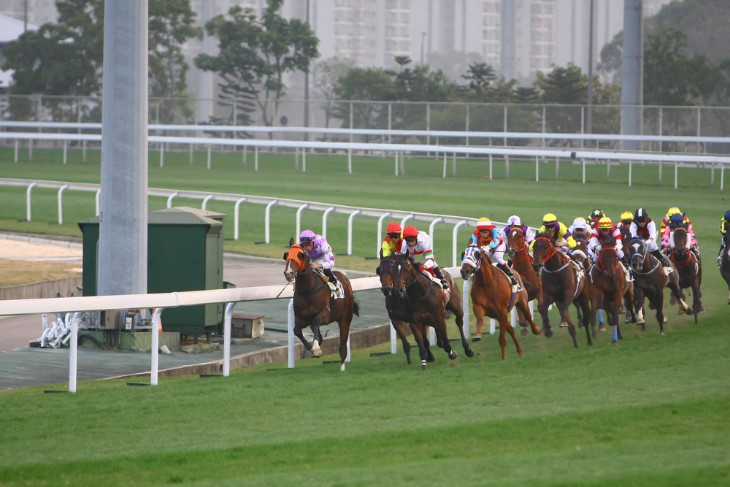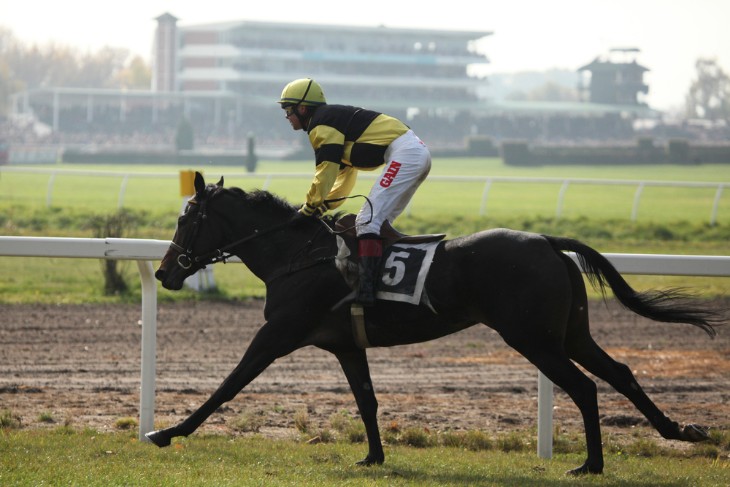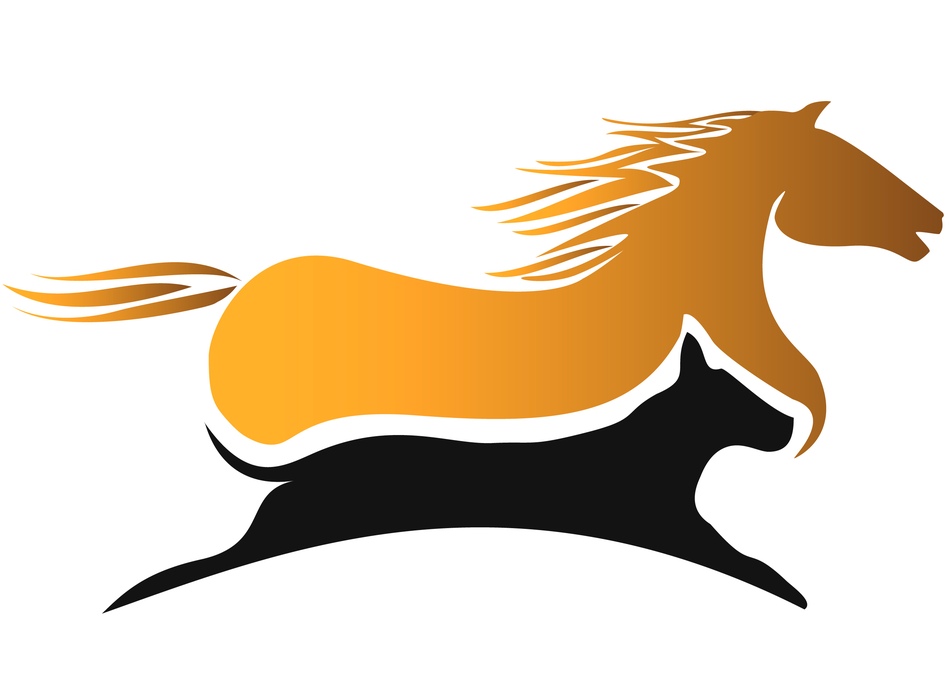In the world of competitive sports, the thrill of the race captures the hearts of many. Two such sports, horse racing and dog racing, have enthralled audiences for decades. But beyond the shared excitement, these two sports are distinctly different in various aspects. In this article, we'll delve into the key differences that set horse racing and dog racing apart, shedding light on their unique characteristics and the factors that make each sport remarkable.
Picture a day at the racetrack—the buzz of anticipation, the thud of hooves or the patter of paws against the turf, the shouts of encouragement from the crowd. Both horse racing and dog racing offer an atmosphere of excitement that draws spectators and enthusiasts alike. These sports have deep-rooted histories, with horse racing tracing back centuries in various cultures, while dog racing emerged in the early 20th century as a more modern pursuit.
Beyond the shared anticipation and energy, horse racing and dog racing have distinct elements that influence their dynamics, strategies, and appeal. This article aims to provide a comprehensive comparison, dissecting the intricate details that define each sport and highlighting the factors that contribute to their individual popularity.
Track Dynamics
The very foundation of horse racing and dog racing lies in the design of their racetracks. Horse racing tracks, often oval in shape, range in length from five to twelve furlongs (roughly 1 to 2.4 kilometers). The layout of these tracks can significantly impact racing strategies, with longer tracks favoring horses that excel in endurance, while shorter ones may demand greater bursts of speed.
Dog racing tracks, on the other hand, are typically a curved shape and much smaller than those designed for horses. The standard distance for a greyhound race is around 480 meters. This compact track size creates a thrilling spectacle as greyhounds navigate tight turns at high speeds. The shorter track length also means that dog races are generally faster-paced compared to horse races.
In horse racing, the longer tracks provide ample space for jockeys to adjust their positions and tactics during the race, while dog racing's shorter tracks demand quick reflexes and strategic positioning right from the starting line. These contrasting track dynamics play a significant role in shaping the races' outcomes and the strategies employed by participants.
Participants: Horses and Jockeys
As the starting gates swing open and the race begins, the protagonists of the show take center stage: the horses and their skilled jockeys. In horse racing, the partnership between the horse and the jockey is crucial. The jockey's expertise in guiding and motivating the horse is an art form in itself. The jockeys must possess not only physical strength but also an innate understanding of their mount's temperament, enabling them to coax the best performance from their equine companion.
Training a racehorse is a meticulous process. Months of conditioning, exercise, and careful dieting lead to the moment when these finely tuned athletes take their place at the starting line. Jockeys don vibrant silks, representing the horse's owner, and as the race unfolds, their subtle shifts in posture and reins direct the horse's energy with precision. The bond between horse and jockey is a blend of trust, experience, and intuition, built over countless hours of training.
Contrastingly, in the realm of dog racing, the partnership between dog and handler is of paramount importance. Handlers are responsible for preparing their greyhounds for races, training them to chase a mechanical lure around the track. The bond between handler and dog is formed through consistent training, reward-based methods, and positive reinforcement. While jockeys role is to guide horses through touch and gentle tugs on the reins, greyhound handlers use verbal commands and visual cues to direct their dogs' actions.
Breeds and Genetics
Behind every galloping horse and darting greyhound lies a tale of genetics and breed characteristics. Horse racing showcases a diverse range of breeds, each developed for specific purposes. The elegant Thoroughbreds are synonymous with speed and stamina, while the powerful Quarter Horses excel in short-distance sprints. The longer endurance races often feature breeds like Arabians and Standardbreds. These breeds have evolved over centuries, honing specific traits that suit their respective race types.
In dog racing, greyhounds reign supreme. These lean, aerodynamic dogs possess exceptional speed and agility, making them ideal contenders for the race track. Greyhounds' streamlined bodies and deep chests allow them to reach speeds of up to 45 miles per hour, a sight to behold as they dash towards the finish line. While various breeds have been used in different forms of dog racing, including Whippets and Salukis, the greyhound's natural athleticism and grace have solidified its status as the primary breed in the sport.

Betting and Wagering
When it comes to the thrills of horse racing and dog racing, the excitement isn't limited to the track alone. The betting aspect adds an extra layer of anticipation for spectators and enthusiasts. In the world of horse racing, betting is an integral part of the experience. Punters study form guides, track conditions, jockey performances, and more to make informed wagers. The British tradition of placing bets on horse races dates back centuries, adding a social and communal aspect to the events.
From the iconic Epsom Derby to the prestigious Grand National, horse racing enthusiasts flock to betting shops, online platforms, and racetrack bookmakers to stake their predictions. The variety of betting options, from win and place bets to more intricate accumulators and forecasts, caters to a range of punters' preferences. The anticipation of watching your chosen horse surge towards the finish line, while your bet hangs in the balance, is an exhilarating experience shared by many.
Similarly, dog racing has its own devoted betting culture. At greyhound tracks, you'll find punters examining greyhound form, studying race times, and observing dogs' recent performances. The mechanics of greyhound racing bets mirror those of horse racing, with options for win, place, show, and combination bets. The thrill of seeing your chosen greyhound cross the line first, carrying your hopes and wager, resonates with the same excitement that horse racing fans know well.
Prestige and Culture
Horse racing has long been embedded in British culture, becoming not just a sport but a societal event. From the Royal Ascot to Glorious Goodwood, horse racing meets are grand occasions that draw celebrities, aristocrats, and the general public. The pomp and pageantry, combined with the thrill of the races, make these events an integral part of the British social calendar. The races are an excuse to dress up, don extravagant hats, and revel in a tradition that has transcended generations.
In contrast, dog racing emerged in the early 20th century as a more accessible form of entertainment. While it may lack the centuries-old heritage of horse racing, dog racing has woven itself into the fabric of modern entertainment. Greyhound tracks are found in various communities, providing an opportunity for a diverse audience to enjoy an evening of excitement. The relaxed and informal atmosphere caters to families, groups of friends, and anyone seeking a lively night out.
Race Distances and Formats
As the gates swing open and the crowd holds its collective breath, the distance of the race becomes a critical factor in determining the outcome. In the world of horse racing, distances vary significantly, influencing the types of horses that excel in each race. The classic Epsom Derby, a mile-and-a-half race, tests the endurance and stamina of Thoroughbreds. Shorter races like sprints demand explosive speed, while middle-distance races require a balance of both attributes.
In the realm of dog racing, the standard distance is around 480 meters. Greyhounds are adept at sprinting, and the compact track size intensifies the excitement. The short distance means that races are over quickly, often lasting less than a minute. The swift pace and tight turns challenge both dogs and handlers, who must work in harmony to secure victory.
The varying race formats also contribute to the uniqueness of each sport. Horse racing encompasses a range of events, from flat races and jump races to turf and all-weather tracks. The diversity allows horses with different strengths to shine on different occasions. In contrast, dog racing primarily consists of straight-line sprints on a set track, focusing on the greyhounds' remarkable speed.
Pace and Strategy
Horse racing and dog racing share the essence of competition, but the strategies deployed by jockeys and handlers differ significantly. In horse racing, jockeys must gauge their horses' pace, considering the race length and track conditions. Do they lead from the start, conserving energy for a final sprint? Or do they hang back, waiting for the perfect moment to make their move? Jockeys' decisions are influenced by the horse's racing style and their competitors' tactics, creating a tactical interplay that unfolds throughout the race.
In dog racing, the challenge lies in guiding greyhounds towards the lure while navigating the twists and turns of the track. Handlers employ voice commands and visual cues to urge their dogs forward, hoping to strike a balance between speed and cornering ability. The early stages of a dog race often involve a rush to establish a favourable position, with dogs strategically positioning themselves to avoid congestion and gain a clear path.
Regulations and Welfare
While the world of racing is synonymous with excitement and competition, it's essential to remember the well-being of the participants. Both horse racing and dog racing are regulated by bodies that oversee the sport and ensure fair play, as well as the welfare of the animals involved. In horse racing, organisations like the British Horseracing Authority (BHA) set strict rules regarding drug testing, track conditions, and jockeys' conduct. These regulations help maintain a level playing field and safeguard the horses' health.
Animal welfare is a priority in dog racing as well. Greyhound racing associations adhere to codes of practice that focus on the dogs' care, accommodation, and treatment. Trainers are responsible for the dogs' physical and mental well-being, ensuring they receive proper nutrition, exercise, and medical attention. As public awareness of animal welfare grows, racing organisations are increasingly mindful of maintaining high standards to ensure the dogs' safety and happiness.
The balance between competition and ethics is a delicate one, and the regulations in place strive to uphold the integrity of the sports while protecting the participants. Racing is a celebration of athleticism and skill, and ensuring the welfare of the animals involved is a shared responsibility of the entire racing community.
Spectator Experience
Beyond the technicalities of the races, the spectator experience is what truly brings these sports to life. Horse racing events like The Grand National or Royal Ascot are iconic for their vibrant atmosphere. The sight of elegantly dressed racegoers, the clinking of glasses in the hospitality tents, and the roar of the crowd as horses thunder towards the finish line all contribute to the spectacle. Horse racing is an event as much as it is a sport, with socialising and tradition playing as important a role as the races themselves.
Dog racing, while often more relaxed in tone, also offers an engaging night out. The casual atmosphere, the joy of seeing the dogs in action, and the thrill of cheering for your chosen greyhound create a sense of camaraderie among the crowd. Many greyhound tracks offer family-friendly evenings with food, entertainment, and the opportunity to place a bet or two, making it an accessible and enjoyable experience for all.

Conclusion
And so, we come to the end of our journey through the world of horse racing and dog racing, uncovering the key differences that set these two captivating sports apart. From the thundering hooves of the racehorses to the graceful strides of the greyhounds, from the prestige of historic horse racing events to the accessible charm of dog racing tracks, each sport brings its own unique flavour to the world of competitive racing.
We've explored the dynamics of racetracks, the partnerships between jockeys and horses or handlers and dogs, the influence of genetics and breeding, the thrill of betting, the cultural significance, the race formats and strategies, the regulations upholding fair play and animal welfare, and the electrifying spectator experiences that make these sports cherished by many.
In the grand tapestry of sporting traditions, horse racing and dog racing stand as distinct threads, each weaving its own story of excitement, strategy, and camaraderie. As we bid adieu to this exploration, we're reminded that the world of racing is not just about crossing finish lines—it's about the history, the heart, and the passion that define these remarkable sports.








